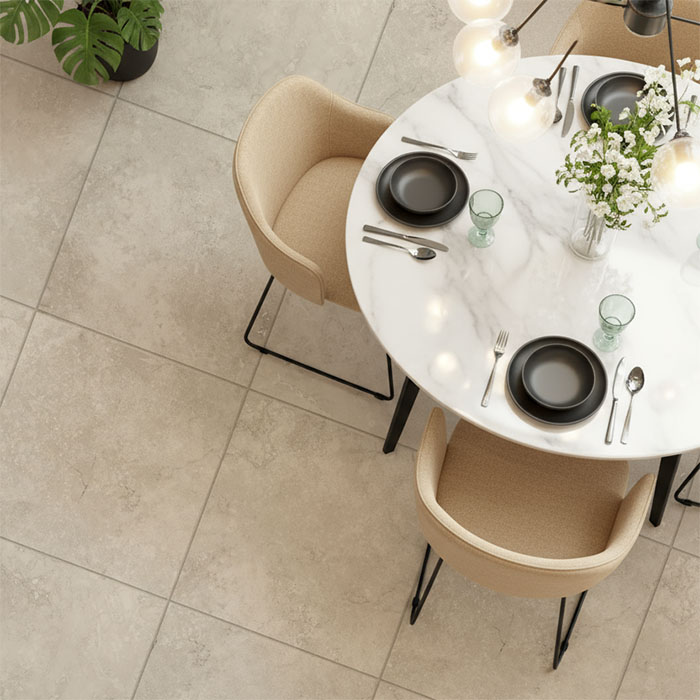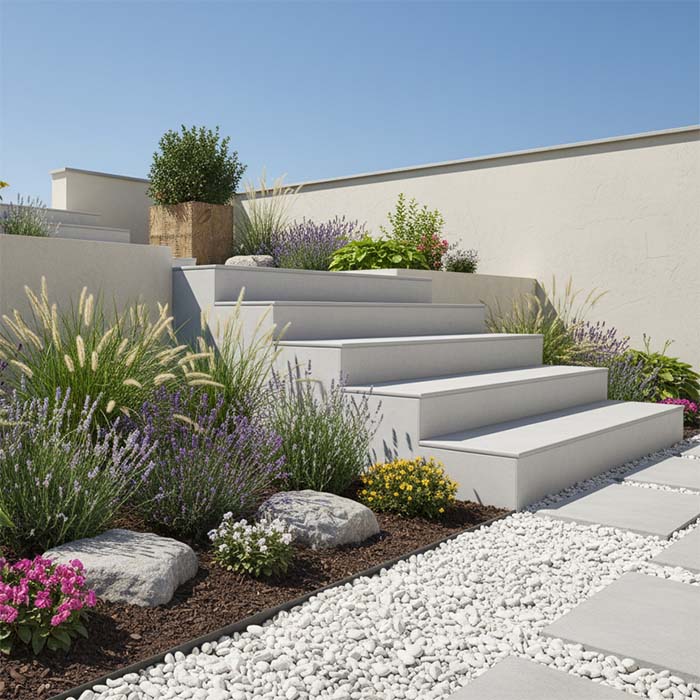24 November 2025
Key Takeaways
Abrasion resistance measures how well a tile withstands wear, helping you choose the right tile for each space based on foot traffic. As a general guide, the abrasion wear rating scale ranges from Class 0 (for walls only) to Class 5 (for all applications, including heavy commercial and industrial use). Selecting the appropriate wear rating, along with proper care and maintenance, is crucial for extending the longevity of your tiles.
Table of Contents
Wear and tear are inevitable. But what if you could pick more resistant tiles, so they don’t show abrasion as much? Fortunately, there is a ratings system for tile longevity that can tell you which tiles are better suited for walls and which can withstand heavier foot traffic. Finding the correct wear rating for your tiles will help you make an informed decision and select the best ones for your purposes.
In this article, you will learn why the wear ratings for tiles were created, how to choose the right tile for the correct application, and tips for extending the life of your tiles.

What Is a Wear Rating?
A wear rating (or wear class) refers to how durable a tile is under foot‑traffic and abrasion. It’s based on laboratory testing of how much wear or abrasion the tile can withstand before showing visible signs of wear. These test results are often grouped into classes for glazed tiles (for example Class 0–5) to help guide selection of tiles for different usage environments.For unglazed tiles on the other hand, typically abrasion resistance is measured by the amount of material removed during testing. These wear ratings provide essential information about the durability and gradual abrasion of your tiles.
Wear Ratings Scale: Classes 0 to 5 Explained
Here are the six wear tile ratings, with a description of how to use them to select your tiles:
- Class 0: These glazed tiles are not recommended for floors and are suitable only for walls in both domestic and commercial settings.
- Class 1: Suitable for areas walked on with soft-soled footwear or bare feet, where there’s almost no scratching dirt — for example, residential bathrooms or bedrooms without direct outdoor access.
- Class 2: Tiles designed for areas that are walked on with soft-soled/normal footwear only small amounts of dirt present. For example, living areas of homes, but not recommended for kitchens, entrances, or other high-traffic areas.
- Class 3: Suitable for areas walked on more frequently with normal footwear and small amounts of dirt. Examples include residential kitchens, hallways, corridors, balconies, and terraces. Heavy or unusual footwear, should be avoided.
- Class 4: Ideal for tiled areas with regular traffic and some scratching dirt, such as entrances, commercial kitchens, and hotel entrances.
- Class 5: Suitable for floor tiles that have severe pedestrian traffic over long periods with some scratching dirt. Including high-traffic public spaces, shopping centres, airport concourses, hotel foyers, public walkways, and industrial applications.
Generally speaking, ceramic tiles are better suited to low-traffic indoor areas. Porcelain tiles are made from finer, denser clay, fired at higher temperatures, and are typically considered more abrasion-resistant (higher wear ratings) and used in higher-traffic areas.
To find the wear rating of a tile along with other performance measures, check the product’s data sheet, which can be found under the ‘Technical Data Sheet’ section on each product page. If you’re still not sure about a particular tile’s abrasion rating, contact us for assistance.


How Wear Ratings Affect Tile Longevity
What’s the best way to prevent premature wear and ensure that your tiles last for years to come? It begins with an honest appraisal of the durability requirements for each room or space. Is it a domestic bathroom floor, where people might often be barefoot or in soft-soled slippers? Or is it a commercial kitchen with constant heavy traffic and possible spills on the floor? Common causes of tile wear, of course, are foot traffic, dirt and general abrasion. The higher your tile’s wear rating, the better it will resist these problems and last longer. Finally, is it better to overestimate your durability requirements rather than underestimate them? Always.
Choosing the Right Tile for Each Room
Start by separating each room into high-traffic and low-traffic areas. Examples of low-traffic areas are bathrooms, toilets and bedrooms. These areas usually allow a wider range of aesthetic choices, as they are less concerned with durability.
Kitchens can often attract more traffic than other rooms, especially when people traipse in through the back (or sliding) door, leaving dirt and other particles on the floor. Your outdoor areas are most likely to attract abrasive particles, so they typically require a higher wear rating than your indoor tiles.
Wear Ratings and Other Considerations
In addition to the wear rating system for tiles, other tile ratings should be considered. Measuring a tile’s water absorption is essential, and the specifications range from Impervious (less than 0.5% absorption), to low water absorption (0.5-3%), medium water absorption (3-10%), and high (>10%). Tiles with low absorption rates are suitable for wet and outdoor areas.
There are also slip resistance ratings:
- P rating: Measures the slip resistance of the floor’s surface under wet conditions.
- R rating: Determines the slip resistance of tiles subjected to oil spills or grease.
Other considerations include your preferred tile material (ceramic, porcelain, stone, etc.) and weighing up your aesthetic choices vs the practicality of your required tile ratings.
Tile Longevity Tips: Care, Maintenance & Cleaning
Because dirt, dust and other abrasive particles can accelerate tile wear, it is recommended to sweep or vacuum your tiles daily, clean up any spills on the spot, and give the floor a weekly mop. Use non-abrasive cleaners such as mild detergent or a tile-specific cleaner. You can also use protective measures such as rugs, placing pads under heavy furniture, and using sealants to further protect the tile’s finish. For further advice on tile care and recommended cleaners, contact us — our team is happy to assist.
This information is for general guidance only; always consult the relevant Australian Standards
.


